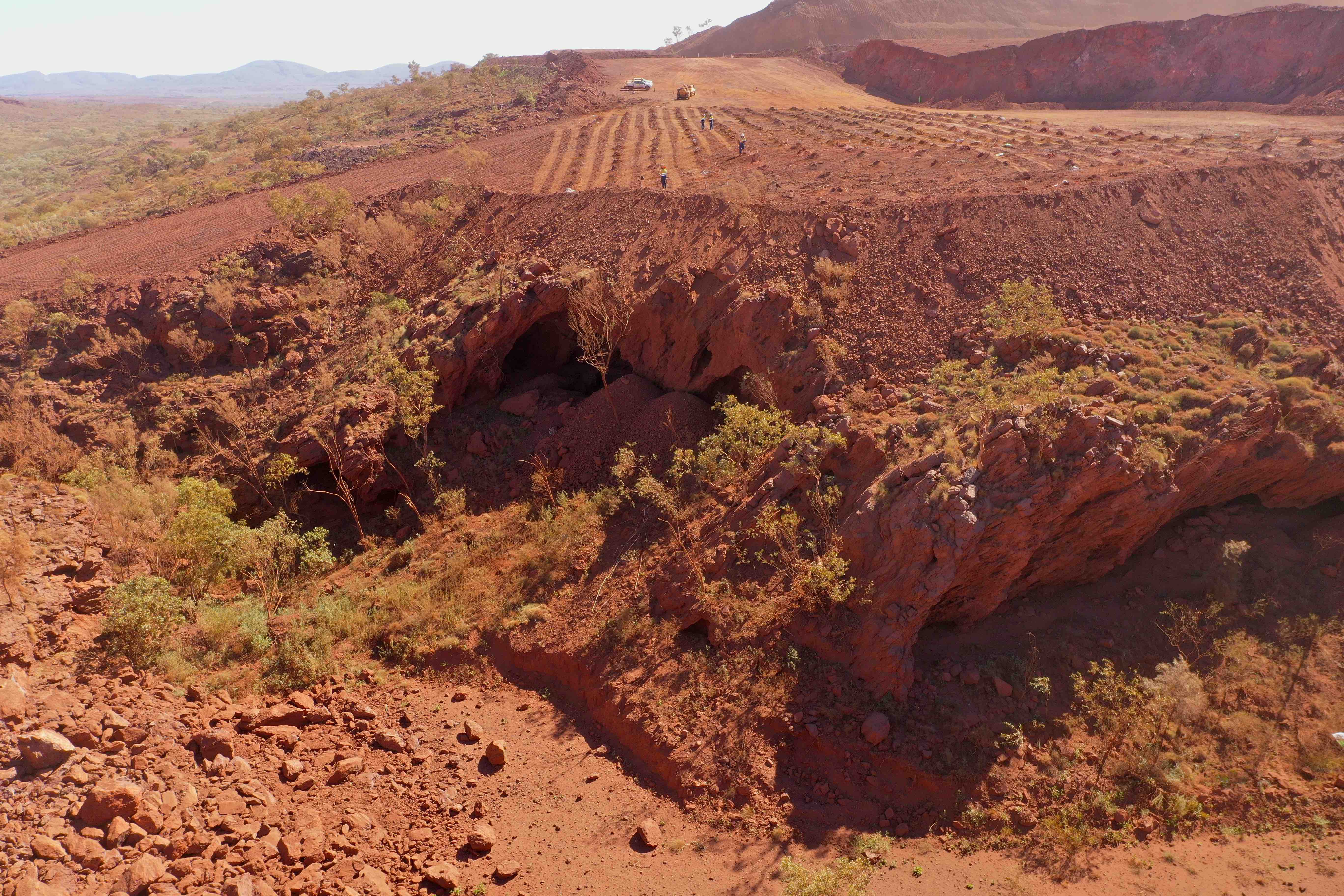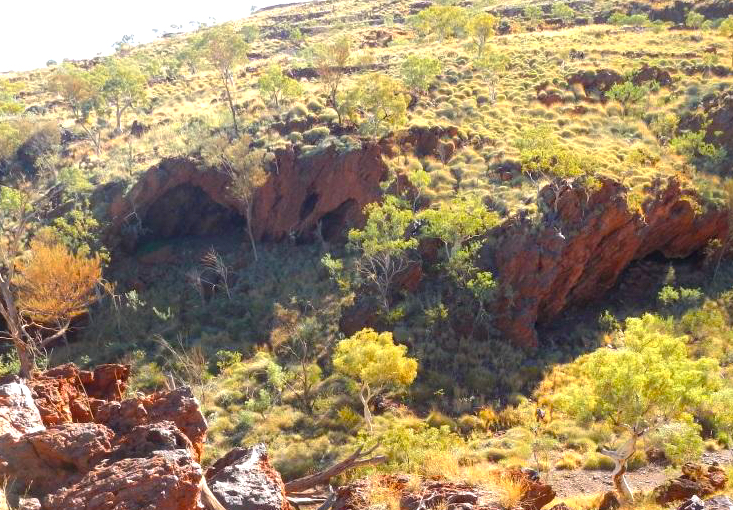
Business & Economics
Holding corporations to account

Heads have finally rolled over the mining company’s shameful destruction of the Juukan Gorge rock shelter, but what are the legal implications and how does corporate culture matter?
Published 11 September 2020
Members of the Puutu Kunti Kurrama people (PKKP), the general public and shareholders of Rio Tinto have all expressed grief and outrage at the company’s shameful destruction of 46,000-year-old Juukan Gorge rock shelters in Western Australia’s Pilbara earlier this year.
These structures were unique and of the highest cultural and archaeological significance.

The rock shelters were destroyed notwithstanding that Rio Tinto had long been told of this importance and the PKKP people had asked that the site be protected.
The ad hoc and erratic responses of Rio Tinto’s executives to the public backlash has only added insult to injury.
After initially justifying its actions by reference to work approvals, Rio Tinto’s Board undertook a review of its cultural heritage management, which suggested that a “misunderstanding” led to the destruction of the rock shelters.

Business & Economics
Holding corporations to account
Far from settling matters, the report just prompted more demands for information and explanation, more uncomfortable facts were revealed, shareholders revolted and called for heads to roll over the scandal.
That demand for heads has now finally been met with the announcement that the chief executive and two other senior executives will resign.
But it should never have come to this kind of shambolic blame game.
The responsibility for this disaster rests squarely with the company. And, far from revealing a series of unfortunate mistakes, Rio Tinto’s systems and processes suggest a very different corporate ‘state of mind.’
Indeed, from this perspective, Rio Tinto’s conscience looks black indeed.
Let us explain. The reason why Rio Tinto’s executives are claiming a misunderstanding is because usually, a company’s ‘state of mind’ is found in its ‘directing mind and will’ – that is, the Board and senior executives.

If they can show that they were unaware of the planned explosions until it was “too late” to change tack, then the corporation’s behaviour can be at best characterised as hopelessly inept.
There are recent reports that Rio Tinto hired lawyers to prepare for a possible injunction at least three days before the blasting. This suggests the Board knew all too well what was about to occur.

Sciences & Technology
A little bird didn’t tell me
Notwithstanding, the main narrative to date, well summarised in the Board review, has been one of unintentional mistakes and system errors:
“It was the result of a series of decisions, actions and omissions over an extended period of time, underpinned by flaws in systems, data sharing, engagement within the company and with the PKKP, and poor decision-making”
Sound familiar? It should do.
This was precisely the sort of narrative so severely criticised by Commissioner Hayne during the Banking Royal Commission.
You may recall Andrew Thorburn, then CEO of NAB, being raked over the coals for (in the Commissioner’s words) attempting to characterise the ‘fees for no services’ debacle as “no more than bumbling incompetence or the product of poor computer systems”.

This is a common ploy by large and powerful corporates. But its time should be over, and it arguably is.
There are two reasons why this sort of argument should no longer hold water.
The first is that there is another, important way to prove corporate knowledge, intention and dishonesty – which doesn’t rely on tracing it to the Board. That is through proving a toxic ‘corporate culture’ which directed, encouraged, tolerated or led to the misconduct.

Business & Economics
Focusing financial law on what really matters
As set out in the Criminal Code Part 2.5, corporate culture is found in the attitudes, policies, rules, course of conduct or practices of a corporation. And as the Australian Law Reform Commission has said in its review into Corporate Criminal Responsibility, corporate culture goes to the heart of organisational (as opposed to individual) blameworthiness.
While Rio Tinto’s CEO was eventually caught out by the inconsistency of the corporation’s responses to the tragic events, it is arguable that its systems and processes are evidence of precisely the sort of deficient corporate culture which establish direct corporate culpability.
Rio Tinto’s acknowledged “systemic failures in the cultural heritage management system” betrays a profit-at-all-costs mentality, only reinforced by its outgoing CEO’s reported mantra to employees that they “fit in or f--- off”.
As the Senate Committee wondered, under this sort of culture, how could Rio Tinto’s people “speak out when they saw things like the Juukan Cave destruction continuing despite the concerns of traditional owners?”.

Underscoring the point, Rio’s attempt in its response to re-characterise that motto as some sort of badge of ‘corporate culture’ honour has been exposed by Australian Financial Review’s Joe Aston as “a flat out lie”.
The second reason is that it is possible – and we say necessary and appropriate – to take the ideas of corporate culture and corporate culpability even further. If we want to know what corporations ‘think’, we should look at their systems, as well as their applied (not just formal) policies and practices.

Business & Economics
Is our trust in banking restored?
These tell us what the corporation intends – these are the objective, enduring and demonstrated face of its corporate purposes. They outlast (as we have seen) executives, managers and employers, all of whom come and go.
Rio Tinto’s implemented systems, policies and processes reflect what it wants to do, and how it wants to do it. Far from being an excuse, the ‘systems errors’ it readily admits to betray the real corporate mindset.
The system reveals corporate intention – its ‘wants’ and purposes.
Likewise, the Board review indicates that Rio’s processes systemically failed to communicate vital information that had been repeatedly conveyed to the company, and which was essential to decisions about where and how to blast.
In one view, that is no accident. The system guaranteed it. And therein lies the true corporate mind.
Banner: The Juukan Gorge rock shelters in May 2020/Photo supplied by PKKP Aboriginal Corporation